My Month In Sound: July 2023
A monthly roundup of discoveries, oddities, songs, and sounds.
Burl Ives // “Cowboy’s Lament”
A week before Wes Anderson’s latest film, Asteroid City, hit theaters, filmhouses around Austin were busy showing his old work. I opted to see Rushmore at Austin Film Society. Since I first saw it in college, this has been my favorite Anderson film, but I couldn’t remember the last time I had seen it. (On a related note, I’ve noticed seasonal swings with my tolerance towards nostalgia: I tend to read/watch/listen to old favorites more in the summer than in the winter. Is it Texan seasonal affective disorder? Wanting to hole up in the A/C, away from the scary heat, with something comforting?)
We go to old favorites to see how we’ve changed and to ring the old emotional bells, in an almost ritualistic manner. But there’s a specific pain to falling out of love with a work of art. I could feel it creeping up on me as I sat in my chair, watching the movie: oh wow, this isn’t as good as I remember. Why aren’t these scenes hitting as hard? Boy, the central love story between a student and a teacher—with her boundaries constantly violated—is pretty creepy in retrospect. I left the theater with a strange mix of sadness and joy. Sad at losing an old friend. Sad at all the time that’s passed. But happy to see how much I’ve changed, and what I’ll love next.
The first hint that Rushmore wasn’t as good as I remembered was how I responded to the soundtrack. Hearing these British Invasion classics clash against the film’s preppy background used to thrill me, but now it feels clunky, clever, and purposeless. Anderson and others that followed—Tarantino and Edgar Wright come to mind—used songs in place of emotion and character development. Now the trick is everywhere, in film and TV, as a shortcut. Music should enhance the film’s depth, not shy away from it.
With time, Anderson has figured out a more measured way to use music. In Asteroid City, it’s bright, somewhat corny 1950s country music, and it works. The songs themselves already sound unreal—rural songs revved up by new technology, soundtracking America’s dawning Space Age—so they mix well with the film’s dollhouse-like aesthetic. And there’s less overt needle drops. Usually, the music is heard at an echo-laden distance, wafting from some unseen speaker in the motel’s motor court. (Another related note: my architect father pointed out that there aren’t many shadows in this sunblasted Southwestern city. It’s perpetually high noon, and it’s perpetually being serenaded.)
So “Cowboy’s Lament” rides into this unreal town. I’ve known this song as “Streets Of Laredo,” but I’ve never heard Burl Ives’ version before. An actor (with folksinger roots) singing a ballad about a dying cowboy recounting his story, in a film that’s framed as a play about the writing of the play. This old folk song has the best line in the movie: “Put bunches of roses all over my coffin / Roses to deaden the clods as they fall.”
The Clientele // “Fables Of The Silverlink”
There are lots of reasons to make new art. This is one of the better reasons: “The only concept for me, really, was that I tried to put everything I know into this record. As if it were the last thing I was ever going to make.” A band that started out as a hushed, lo-fi update on ’60s pop has bloomed into something wildly strange. “Fables Of The Silverlink” combines Ableton beatmaking experiments with chamber music and Alisdair MacLean’s shard-like lyrics. More of this energy, please. Make stuff with all of your ideas, all of your selves. Annie Dillard: “spend it all, shoot it, play it, lose it, all, right away, every time…Anything you do not give freely and abundantly becomes lost to you. You open your safe and find ashes.”
Baby Monitor Whale Song
A 1.5 second-ish delay between my baby babbling down the hall and the baby monitor in my room = pretty groovy whale song.

A mirror
There she is in her finery. Head shorn like a monk. Buzzed in defiance, maybe she is a monk. Her monastery is public, her monastery a mirror, and she brought the mirror to television, the great connector, the great hypnotizer. Her performance was hypnotic, but it awakened. It violently cut through the dream. What followed was the silence of awakening, that awful post-dream state where nothing is where it said it would be. The humdrum violence. Alone together.
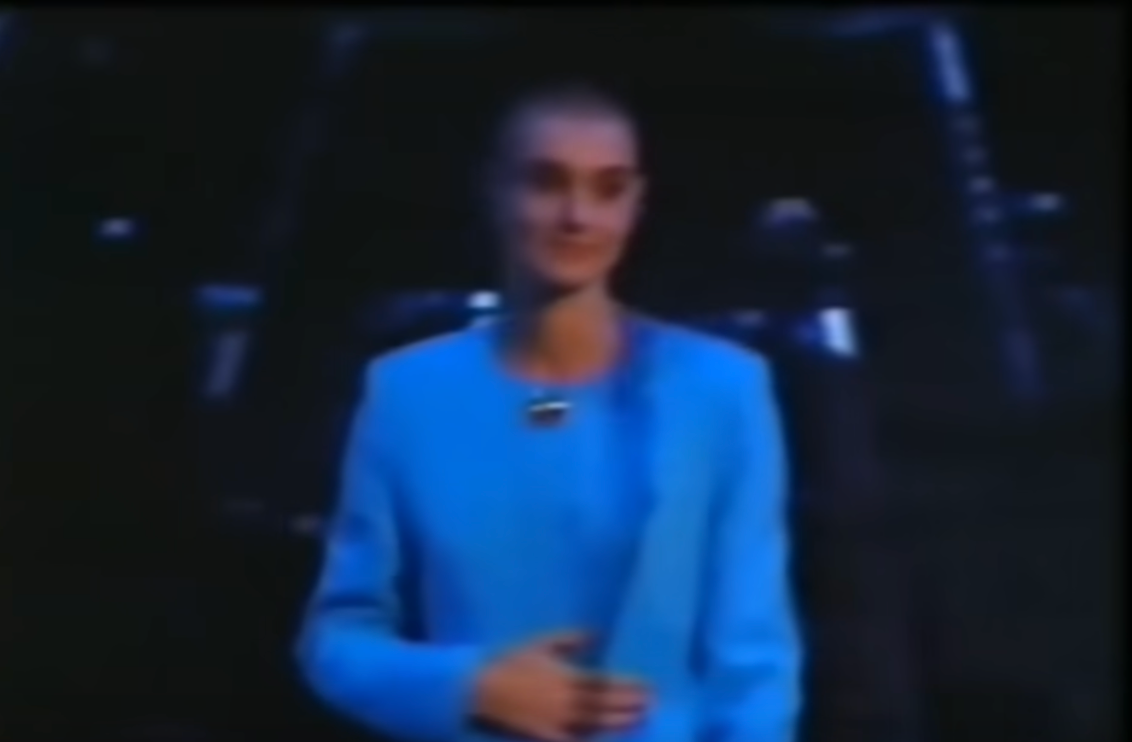
There she is, walking on stage to a rain of boos, some cheering, yes, but boos breaking through and gathering their troops to blot out the sun. She stands there, smiling like a Buddha.
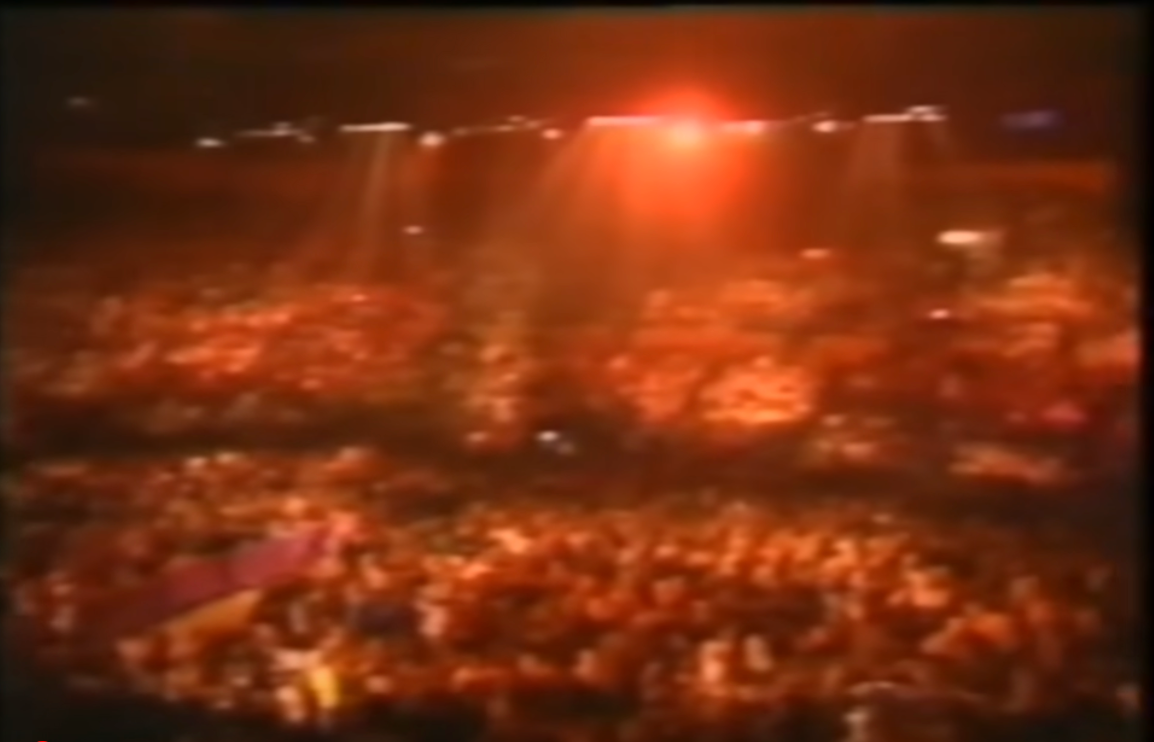
She waits. She is a vase in the rain filling to the brim with venom, a venom that knows no boundaries. The reddish lights on the crowd makes it look like hell. The actor said he’d uh-smacked her, like it was a line from one of his mob movies.
The band is afraid. They want to get the fuck out of hostile territory. Strange, they’re here to celebrate Dylan, the great slinger of truth, who was called a judas several lifetimes and costume changes ago. Can he hear the storm in the bowels of his dressing room? Why doesn’t he join the fight, this old partisan? Because he is, has always been, slippery as the snake. Slippery as the devil. He makes his own wars. Though maybe his silence knows something more, something about betrayal. The silence is a mirror.
The old folksinger, a friend of Dylan, will have to step in. He comes to offer a rescue. Maybe she can leave the stage and wait out the storm. She refuses. She takes one big step towards the rising anger. The piano player tries once, twice to start the song (which song would she sing?) But there she is, waving him off once with a gentle slice, a second time with violent blades to the neck. More dream-cutting.
There she is, singing a new song, which is an old song, older than time, a song of war. The wars we inflict on each other, ourselves. The wars of the dream state, the war against the truth.
“Child abuse / Yea-ah!
Child abuse / Yea-ah!
Subhuman bondage,”
To boos. Unwitting defenders of a false faith.

She is a vase broken, cut open by anti truth, anti beauty, and she is reflecting the shards back against the disbelieving rain. She is all alone now. It is only that voice, the soft Irish lilt mixed with glass. Her eyes burn, her heart beating to the rafters, breaking free though we cannot see, the dream has us tricked for awhile. Later she is right, but what good is later? What good is being right? She is beyond right and wrong, right now, she is reminding, shaking awake, shaking her whole body in front of the violence.

She is alone. She is done with the song. The song is not done. It slides easily between the ribs and into the lungs. She watches through half-closed eyes, Buddha eyes.
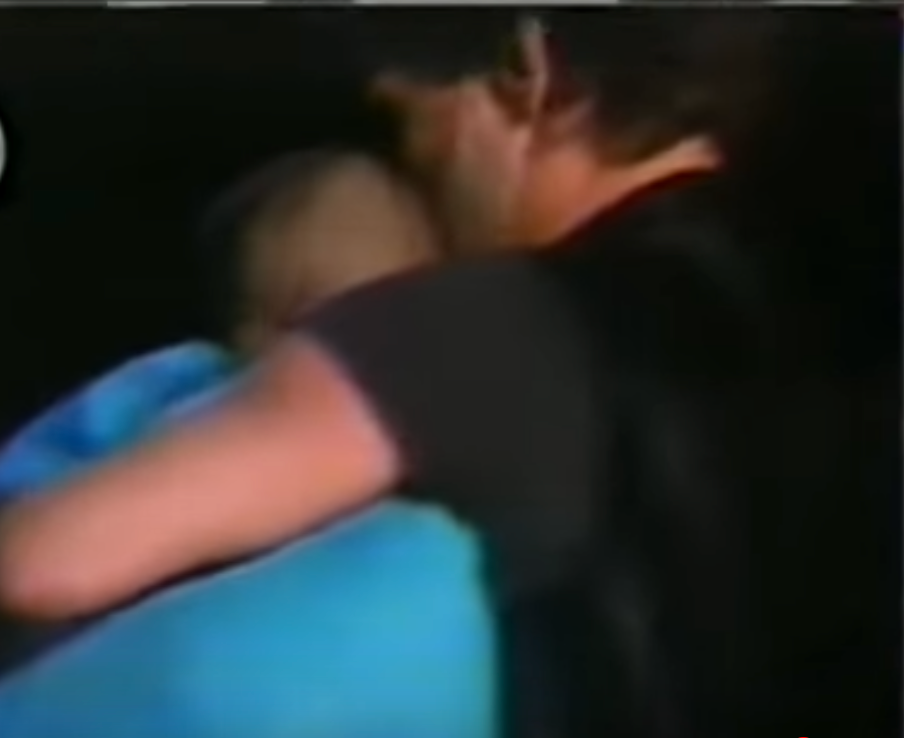
She exits the stage and is embraced by the old folksinger. She resists. He kisses her. She screams her tears out, collapsing, disappearing into his arms. A fortress of love and light in a terrible storm. But when you give everything, nothing can protect you. Her death began that night. The song is not done.
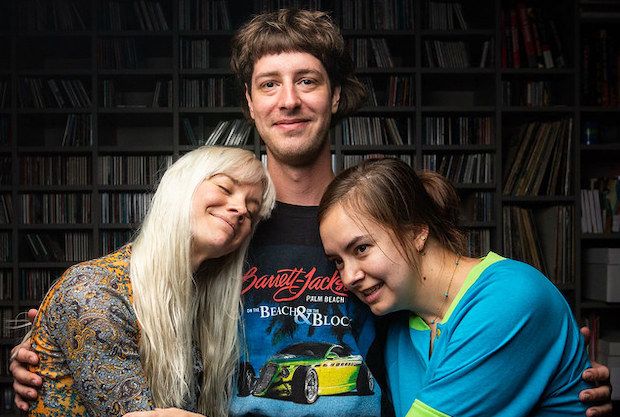
Being Dead Guest DJ Set
Had a wonderfully weird time recording this with Being Dead. Listen at KUTX.
On its debut album, When Horses Would Run, Being Dead indulges in the trickster side of life. Songs are collaged together from bits of garage rock, surf guitar, heavy metal, and jazz piano. There are scraps of songs littering the track list: a 75 second Being Dead theme song, an even shorter acappella scenario wondering what would happen if God owned a Bible. The band members go by Falcon Bitch, Gumball, and Ricky Moto, and on stage they try out jokes between songs and trade instruments with ease.
When Horses Would Run is my favorite Austin album I’ve heard in years precisely because of this trickster energy. Some bands try a goofy pose, but it feels cynical. Others are so self-serious they’re crushed under the weight. Being Dead is in that sweet spot that’s inviting, chaotic, silly, and strange. They write excellent songs: “Last Living Buffalo” sounds funny until they’re screaming over Sabbath-esque riffs about the slaughter of animals. Falcon Bitch and Gumball sing in a perpetual, old-style harmony–which is so rare these days–and it splits the difference between the Pastels and the Everly Brothers. The times are heavy, but Being Dead is actively removing weight from the world through their music.
Last month, Falcon Bitch and Gumball helped us kick off our series of My KUTXes recorded live at Lou’s on Barton Springs (the next one is Tuesday, July 25). I had such a blast with them: with banter about adult diapers, getting stuck in cat doors, and dancing to Ricky Martin, this felt more like an improv comedy hour than a guest DJ set. Fair warning: there was a weird technical difficulty throughout where our mics had a bit of delay on them. You’ll hear us talk a little slower than normal, which made for a psychedelic experience. In retrospect, of course that would happen during their set. That’s just the price of living in Being Dead’s weird world.
Playlist:
1. Suicide — “Ghost Rider”
2. Peter Grudzien — “The Unicorn”
3. Chronophage — “Nytears”
4. Deerhoof — “Basket Ball Get Your Groove Back”
5. Elliott Smith — “Speed Trials”
6. Cindy Lee — “Dry Dive”
7. Ought — “Beautiful Blue Sky”
8. Ricky Martin — “Livin’ La Vida Loca”
9. Grass Widow — “Uncertain Memory”
10. The Raincoats — “Off Duty Trip”
11. Women — “Eyesore”
12. The Equals — “Michael & His Slipper Tree ’93”

Catching Up With Lael Neale
When I’m listening to Lael Neale’s new album Star Eater’s Delight, it makes me think of the duality of “resistance.” There’s resistance in the sense of restraint: the songs are skeletal, tenuously built on Neale’s hovering voice, unchanging drum machine, Guy Blakeslee’s minimalist guitar scribbles, and the Omnichord, which drones and decorates the edges. There are no cliched, here’s-the-big-chorus tricks here. Neale and Blakeslee let the songs unfold, and I lean in closer.
But this restraint is also a form of resistance, as in: Neale is fighting against something. Maybe modernity, with all of its hollow digital worship—Star Eater’s Delight, like her previous for Sub Pop, was recorded on cassette, and tape hiss acts like a third band member here. She sings of flowers, rivers, seas, and trees; holy water, perfect deaths; bells of time, patience, and the speed of medicine. Carried by words and rhythm, she’s barreling towards something just beyond the horizon.
Before embarking on her first European tour, Neale called in from a tour stop in Baltimore to talk about hiss aesthetics, finding her voice, and how Ralph Waldo Emerson and Jane Eyre seeped into her timeless minimalism.
Had a great chat with Lael Neale. Read more at Aquarium Drunkard.
The Habitual Dangers Of AI-Generated Art
One of the core selling points of AI-generated art is it’s a labor-saving tool. By pressing a button—or in this case, typing into a chat box—the AI can create art in seconds. No more pesky thinking or doing! No more paint on your fingertips, your clothes, your floor! No more wrestling with emotional or spiritual ideas! No more surprising yourself! No more feeling of accomplishment!
I’m beginning to suspect that someone doesn’t want us here anymore.
AI-generated art is a capitalist fever dream. It seeks to remove the process, the labor from art creation. But making the art is the thing itself: the creation of art is art. Art-making is a bodily, sensuous experience, as in requiring total awareness of the senses. Outsourcing art-making to an algorithm is a sad and lonely experience.
This is an extension of Western hyper-rationalism, which has produced a profound schism at the core of Western society. There are those who believe the material world is supreme: everything can be understood mechanically, and any other belief is superstition or hippie woo-woo. And there are those who believe the immaterial world is supreme: emotions and thoughts and feelings are the only reality. Matter is just an illusion. But the material and immaterial worlds cannot be divided. They go together, like two sides of the same coin, like space and time in Einstein’s discovery. The universe creates us, and we create the universe. We are co-conspirators. We are artistic collaborators.
I’m currently reading and enjoying John Higgs’ William Blake Vs. The World. Through his art-making, the 19th century artist and poet William Blake intuited a lot of what science is now finding. “What is now proved was once, only imagin’d,” he once declared. Reason alone isn’t enough; careful artistic and spiritual observation is needed to truly see the world as it is. It makes me wonder: why do we divorce art and science in school? What would happen to our understanding if the two were more united, like in Blake’s example or Leonardo Da Vinci’s example? I wonder if we’d have a more profound respect for the nature of things. There could be more of an ethical or spiritual backstop to AI research, to prevent faulty assumptions from metastasizing. There could be a “why” that guides AI development, to make sure it doesn’t come with the same hierarchical, ends-justify-the-means baggage.
The common pushback against this sort of technological critique is that things always change; there’s no stopping progress. But as Neil Postman points out, technological change is ecological rather than additive. It transforms the ecosystem in unpredictable ways. Or there’s L.M. Sacasas’s astute warning: “The most important thing about a technology is not what can be done with it in singular instances, it is rather what habits its use instill in us and how these habits shape us over time.”
Good art has both surface and depth. AI-generated art is all surface; it cannot deliver depth because there’s nothing behind it but randomness, lack of meaning, and a simulation of pleasure. What happens when we instill the habit of never finding depth of meaning in art? The receiver of the art grows a deep spiritual loneliness. And I think that loneliness extends both ways. If I can just push a button to create, pleasure is distorted, replaced by the shallow, short lasting pleasure of a finished product. I lose the sense of accomplishment, of finding out what I feel and think in this moment. I lose transcendence, and I am less human. “What you respond to in any work of art is the artist’s struggle against his or her limitations,” Kurt Vonnegut once put it.
Artists know art, and through that, they know something profound about the brain and human nature. I wish AI engineers would be humble enough to seriously study art-making before they attempt to transform it irrevocably.
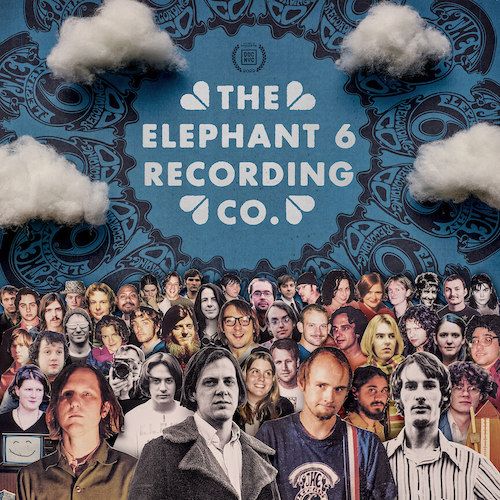
The Strange South: ‘The Elephant 6 Recording Co.’ and ‘This Is Sparklehorse’
When we talk about ’90s music scenes in America, we tend to think of the usual suspects: Seattle’s grunge takeover, New York and LA’s rap innovations, Chicago’s alternative nation. But the American South was happening in its own strange way. Two new films, covering two very different Southern artistic expressions in the ’90s, subtly push against the idea that Southern music is exclusively traditional or conservative—after all, the region pretty much birthed American music as we know it. In the ’90s, The Elephant 6 Recording Company and Sparklehorse forged new links in that chain, making exciting, boundary-pushing music that remapped a new South for a new generation.
C.B. Stockfleth’s The Elephant 6 Recording Co. is a joyous, heartfelt look at the DIY collective that gave rise to the bands Neutral Milk Hotel, The Apples In Stereo, Olivia Tremor Control, of Montreal, Elf Power, and dozens more. It’s astounding the level of creativity that exploded out of Elephant’s Athens, Georgia home base, but what’s interesting is how it all started. Most of the principals grew up in tiny Ruston, Louisiana, a world away from Athens’ freewheeling circus—and a universe away from American music culture at large. Two ingredients were in Ruston’s petri dish: a good college radio station and boredom. “I feel like kids in places like that tend to get deeper into the things they love…because they need to,” Julian Koster (Neutral Milk Hotel, The Music Tapes) says in the film. “They have to escape into something.” The podunk atmosphere fed the musicians’ desire to create on their own terms. No cowboy hats or blues riffs here. Instead, the Elephant 6 bands loosely gathered themselves around psychedelic pop and punk rock.
Read more of my deep dive into these great music docs at Aquarium Drunkard (my first piece for them! So excited!).